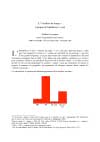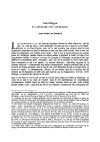Sky
« L’« hĂ©ritier du temps ». Ă€ propos de l’épithète jwʿw nḥḥ »
ENiM 3, 2010, p. 1-21.
 L’épithète jwʿw nḥḥ, l’ « hĂ©ritier du temps », renvoie essentiellement Ă Osiris ou Ă la divinitĂ© solaire dans certains de ses aspects. Il s’agit d’une divinitĂ© qui se rĂ©gĂ©nère pĂ©riodiquement en dĂ©butant rĂ©gulièrement un nouveau cycle temporel neheh annuel ou diurne.
L’épithète jwʿw nḥḥ, l’ « hĂ©ritier du temps », renvoie essentiellement Ă Osiris ou Ă la divinitĂ© solaire dans certains de ses aspects. Il s’agit d’une divinitĂ© qui se rĂ©gĂ©nère pĂ©riodiquement en dĂ©butant rĂ©gulièrement un nouveau cycle temporel neheh annuel ou diurne.
 The attribute jwʿw nḥḥ, the « Heir of time », refers essentially to Osiris or to the solar divinity under some of its aspects. It is a divinity who regenerates periodically herself beginning regularly a new temporal cycle neheh annual or diurnal.
The attribute jwʿw nḥḥ, the « Heir of time », refers essentially to Osiris or to the solar divinity under some of its aspects. It is a divinity who regenerates periodically herself beginning regularly a new temporal cycle neheh annual or diurnal.
 Consulter cet article (50780) -
Consulter cet article (50780) -  Télécharger cet article au format pdf (26711)
Télécharger cet article au format pdf (26711)
« Ciels d’Égypte. Le « ciel du sud » et le « ciel du nord » »
ENiM 5, 2012, p. 73-102.
 Depuis les temps anciens jusqu’aux périodes tardives, les Anciens Égyptiens, pour décrire le ciel, distinguaient le « ciel du sud » et le « ciel du nord », aussi bien dans les textes que dans l’iconographie. Les représentations de la voûte céleste qui apparaissent sur des plafonds ou des couvercles de sarcophages permettent d’identifier les astres principaux du ciel dit « méridional » comme étant ceux qui se déplacent sur l’écliptique avec, essentiellement, les étoiles-décans qui balisent le parcours quotidien et annuel du soleil. Le ciel « septentrional », quant à lui, est le domaine des constellations boréales, visibles toute l’année et, pour cette raison, dénommées par les Égyptiens « Celles qui ne connaissent pas la destruction ». L’opposition « spatiale » s’accompagne d’une opposition « mythologique » : les constellations du ciel du nord sont liées à l’idée d’immortalité car on ne les voyait jamais disparaître dans la Douat. À l’inverse, les ensembles stellaires situés plus au sud, dont les prototypes sont Sirius et Orion, qui sont absents du ciel un certain temps au cours de l’année, sont comparés aux vivants : ils « vivent » lorsqu’ils brillent au firmament, et « meurent » lors de leur invisibilité, qui est ressentie comme un séjour dans la Douat. Ces observations expliquent de nombreuses allusions retrouvées dans les Textes de Pyramides.
Depuis les temps anciens jusqu’aux périodes tardives, les Anciens Égyptiens, pour décrire le ciel, distinguaient le « ciel du sud » et le « ciel du nord », aussi bien dans les textes que dans l’iconographie. Les représentations de la voûte céleste qui apparaissent sur des plafonds ou des couvercles de sarcophages permettent d’identifier les astres principaux du ciel dit « méridional » comme étant ceux qui se déplacent sur l’écliptique avec, essentiellement, les étoiles-décans qui balisent le parcours quotidien et annuel du soleil. Le ciel « septentrional », quant à lui, est le domaine des constellations boréales, visibles toute l’année et, pour cette raison, dénommées par les Égyptiens « Celles qui ne connaissent pas la destruction ». L’opposition « spatiale » s’accompagne d’une opposition « mythologique » : les constellations du ciel du nord sont liées à l’idée d’immortalité car on ne les voyait jamais disparaître dans la Douat. À l’inverse, les ensembles stellaires situés plus au sud, dont les prototypes sont Sirius et Orion, qui sont absents du ciel un certain temps au cours de l’année, sont comparés aux vivants : ils « vivent » lorsqu’ils brillent au firmament, et « meurent » lors de leur invisibilité, qui est ressentie comme un séjour dans la Douat. Ces observations expliquent de nombreuses allusions retrouvées dans les Textes de Pyramides.
 From very early times down to the late periods, the Ancient Egyptians describing the firmament distinguished the “southern sky” and the “northern sky” in their texts as well as in their iconography. Representations of the sky that appear on ceilings or coffin lids permit to identify the main stars in the sky called “southern” as those that move along the ecliptic comprising, in essence, the decanal stars that mark the daily and annual course of the sun. The northern sky, on the other hand, is the domain of the boreal constellations that are visible throughout the year, which is why the Egyptians called them “Those who do not know destruction”.The “spatial” opposition is accompanied by a “mythological” one: the constellations of the northern sky are tied to the notion of immortality because they can never be seen to vanish into the Duat. Inversely, the constellations situated further to the south, with Sirius and Orion as prototypes, which are absent from the sky during a certain lapse of time in the year, are compared to the living: they “live” while they sparkle in the night firmament and “die” during their invisibility, which is perceived as a passage in the Duat. These observations explain a great variety of mythological allusions issuing from the Pyramid Texts.
From very early times down to the late periods, the Ancient Egyptians describing the firmament distinguished the “southern sky” and the “northern sky” in their texts as well as in their iconography. Representations of the sky that appear on ceilings or coffin lids permit to identify the main stars in the sky called “southern” as those that move along the ecliptic comprising, in essence, the decanal stars that mark the daily and annual course of the sun. The northern sky, on the other hand, is the domain of the boreal constellations that are visible throughout the year, which is why the Egyptians called them “Those who do not know destruction”.The “spatial” opposition is accompanied by a “mythological” one: the constellations of the northern sky are tied to the notion of immortality because they can never be seen to vanish into the Duat. Inversely, the constellations situated further to the south, with Sirius and Orion as prototypes, which are absent from the sky during a certain lapse of time in the year, are compared to the living: they “live” while they sparkle in the night firmament and “die” during their invisibility, which is perceived as a passage in the Duat. These observations explain a great variety of mythological allusions issuing from the Pyramid Texts.
 Consulter cet article (45587) -
Consulter cet article (45587) -  Télécharger cet article au format pdf (23640)
Télécharger cet article au format pdf (23640)
ENiM 18 - 2025
4 article(s) - 11 mars 2025.
ENiM 1 à 18 (2008-2025) : 223 articles
4 019 401 téléchargements
8 332 150 consulations.
Index des auteurs

Mots clés

Derniers articles : 
Robert Steven Bianchi
Duplication and Continuity
(ENiM 18, p. 13-36 — 11 mars 2025) 
Frédéric Mougenot
Rénénoutet à la porte de la maison
(ENiM 18, p. 1-12 — 29 janvier 2025) 
CENiM - Mise en ligne des volumes Ă©puisĂ©s : 
 Anne-Sophie von BOMHARD DĂ©cans Ă©gyptiens, CENiM 23, Montpellier, 2020 — (2020)
Anne-Sophie von BOMHARD DĂ©cans Ă©gyptiens, CENiM 23, Montpellier, 2020 — (2020) 
 Jean-Claude Grenier L'Osiris ANTINOOS, CENiM 1, Montpellier, 2008 — (26 dĂ©cembre 2008)
Jean-Claude Grenier L'Osiris ANTINOOS, CENiM 1, Montpellier, 2008 — (26 dĂ©cembre 2008) 
TDENiM - Mise en ligne des volumes Ă©puisĂ©s : 
 Twitter
Twitter 3615168 visites - 4533 visite(s) aujourd’hui - 191 connecté(s)
© ENiM - Une revue d’égyptologie sur internet
Équipe Égypte Nilotique et Méditerranéenne - UMR 5140 - « Archéologie des Sociétés Méditerranéennes » (Cnrs) - Université Paul Valéry - Montpellier III























 Contact
Contact
 Abonnez-vous !
Abonnez-vous ! Équipe Égypte Nilotique et Méditerranéenne
Équipe Égypte Nilotique et Méditerranéenne UMR 5140 « Archéologie des Sociétés Méditerranéennes » (Cnrs)
UMR 5140 « Archéologie des Sociétés Méditerranéennes » (Cnrs) Université Paul Valéry - Montpellier III
Université Paul Valéry - Montpellier III